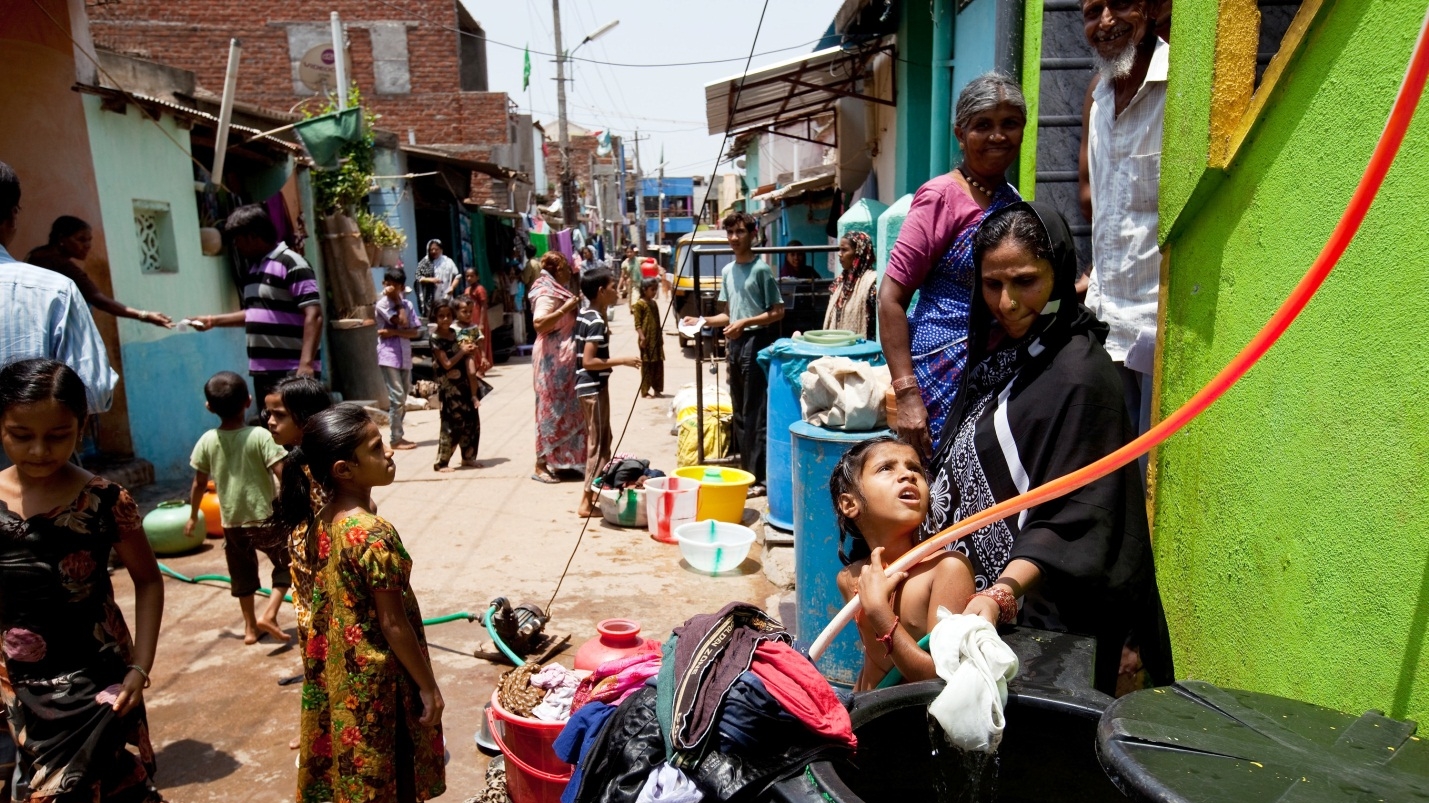What is 24x7 water supply?
24x7 water supply means that every consumer gets water at full pressure 24 hours a day, seven days a week. While this level of service is common in several of the world’s cities, including in Africa, no Indian city provides its citizens with round-the-clock water supply. Most people in towns and cities in India receive water for a couple of hours a day at most, and some receive it only on a few days a week.
The Government of India recognizes the importance of 24x7 supply. Accordingly, the Ministry of Urban Development has made 24x7 water supply a Service Level Benchmark for water providers. The ministry has also issued a Guidance Note on Continuous Water Supply (24x7).
Why is continuous water supply important?
It is reliable: 24x7 water supply reduces the time and money spent by citizens to store water. Without it, citizens have to install expensive water tanks, wait for public tankers to supply them, or buy water from private sellers. The poor are the hardest hit; they have to carry water over long distances, queue for hours at municipal stand posts to collect it, or wake up late at night to fill their buckets and pots. Adults lose time that could be better spent in productive work, while children often miss school to collect water for their families. Continuous 24x7 water supply frees citizens from the burdens of unreliability.
It is clean: Continuous water supply is critical for the people’s health. When the pipes remain full, the water remains clean.Under intermittent service, when pumping stops and the pressure in the pipes drops, groundwater from the surrounding areas can be sucked in, bringing with it wastewater from homes, and drains. If the pipes are continuously filled with, and supplying, water there is less chance of such contamination. Continuous water supply thus helps keep water clean and safe for consumers.
It is efficient: Throughout the world, municipal authorities have found that continuous water supply is the most efficient and cost-effective way of supplying water. This is because leaking pipes must be fixed before a 24x7 water supply system can be put in place. This, in turn, reduces the amount of water lost in distribution and makes more of it available for supply. In the long-term, these improvements reduce operating costs, unlike intermittent supply where pumping costs are high, the durability of pipes is reduced, and it is difficult for providers to ascertain how the network is operating.
Has 24x7 water supply ever been attempted in India?
Yes, three cities in water-stressed parts of Karnataka – Hubli- Dharwad, Belgaum, and Gulbarga - have shown that it is indeed possible to supply citizens with clean water on a continuous basis. About 200,000 people in five demonstration zones in these cities now receive 24x7 water under the World Bank-supported Karnataka Urban Water Sector Improvement Project, implemented in 2005.
A number of other such initiatives are now underway in India’s states. These include Madhya Pradesh (Khandwa and Shivpuri), Karnataka (Mysore, Ilkal and Bijapur), Maharashtra (Nagpur, Aurangabad, Ichalkaranji and Lonavla), Andhra Pradesh (Vishakhtapatnam), Bihar (Patna), Himachal Pradesh (Shimla), Chattisgarh (Raipur), Jharkhand (Ranchi), Gujarat (Vadodara), Tamil Nadu (Coimbatore), West Bengal (Chandernagore and Garulia), and Punjab (Chandigarh).
Does 24x7 water mean higher tariffs?
Not if the system is managed efficiently. Once leaking pipes are fixed and infrastructure maintained properly, more water is available to actually reach people’s taps at lower cost. And, when all connections are metered and water bills paid regularly, the financial situation of the provider improves and it can invest in maintenance needed to keep the system running efficientlyy, thus helping keep tariffs down.
Moreover, when people are charged according to the amount of water they consume -- volumetric charging – they tend to conserve this resource, reduce waste, and manage their consumption in keeping with their budgets
Can the interests of the poor be safeguarded?
Yes. In Karnataka, the government has adopted a pro-poor policy for the supply of urban water services, following consultations with the public. Under this policy, the urban poor – identified in accordance with clearly laid down criteria – were given incentives to take metered household connections by waiving the deposit charge. The municipal authorities fixed a lifeline supply of 8,000 litres per household at a concessional rate - currently Rs 48 per month. This policy has been piloted in the three cities of Karnataka and will be adopted in other areas too when the initiative is scaled up.
Is there enough water available for 24x7 supply?
Yes. Contrary to popular perception, 24x7 water supply can actually help conserve this precious resource. For instance, in the three demo-zones of Karnataka, greater operational efficiency and better maintenance has reduced leaks substantially, with leakage falling from over 50 percent before the new system was put in place to around 10 percent or less after it became operational.
Lower losses in distribution, together with greater conservation by users has actually reduced the overall quantity of water supplied to citizens. In the demo-zones, for instance, the quantity of water supplied fell from an average of 22.14 MLD before the project to 19.5 MLD after the establishment of the 24x7system. (Water and Sanitation Program Study, 2010)
What was the model of operation in the pilot project?
In the demonstration zones, the city and project authorities employed a private company to reduce leakage in the pipes. The company organized the design and oversaw construction of the improved facilities. Subsequently, the company operated the system on a 24x7 basis on behalf of the city.
Is the 24x7 model recovering costs?
Reduced leakage (which means lower costs for pumping water), more efficient operations, and the willingness of customers to pay for the improved service have all allowed the city to recover the cost of service delivery from user fees and other state-wide grants for water services.
